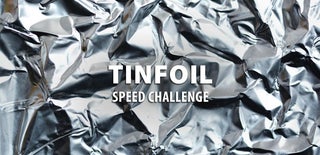Introduction: Repair Liquid Damaged Keyboard With Tin Foil
I recently spilled water on my keyboard and while it still works, some keys i.e. "z" and "x" have stopped responding.
Instead of immediately replacing it, I decided to check and see if it can be fixed.
Step 1: Prepare the Stuff You Might Need
You may need the following:
1. Well lit area to work on.
2. A screw driver
3. a tinfoil/aluminum foil
4. thin tape (I like using magic tape)
5. a marker (I use Sharpey)
6. scissor
7. A multi-meter to test for broken traces (optional but will greatly save time)
Step 2: Diagnosis
1. Unscrew (watch out for those hidden screws behind stickers or rubber pods)
2. Open it up. Do not touch the circuit board!
3. Find the flexible film where you find the circuit traces (white/silver lines).
4. Mark the non working buttons using a Sharpey or permanent board marker.
5. Look for dark blotches or any signs of potential damage on traces around the non working button.
6. If you have a multimeter, test for continuity using the diode mode to confirm if it's the culprit (Optional).
Step 3: Repair...
Once you have determined the severed traces, begin reconnecting them so the current can freely flow.
1. Start by cutting a narrow strip of foil (avoid kinking/crimping/frizzing the foil or you're gonna run into issues later).
2. Ensure that the strips cover the broken traces and avoid other traces so keep them as narrow as possible.
3. Carefully overlay the strips on and put a tiny piece of tape to secure. Ensure that the foils sit flat, not kinked, crimped or frizzed, otherwise it can cause duplicate presses etc.
4. put everything back together.
5. Test all buttons, if any of them aren't working try again, follow all the steps from square 1.
Congratulations! You have fixed your keyboard
Step 4:

Participated in the
Tinfoil Speed Challenge









